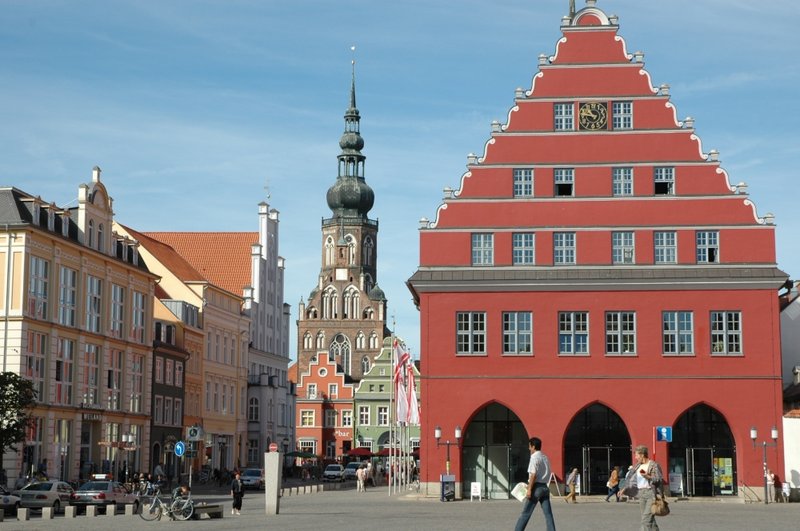
Greifswald officially
the University and Hanseatic City
of Greifswald (in GermanUniversitäts-
und Hansestadt Greifswald), is a city in northeastern Germany.
It is situated in the
state of Mecklenburg-Vorpommern, at an equal
distance of about 250 kilometres (160 mi) from Germany's two largest
cities, Berlin and Hamburg.
The town borders the Baltic Sea,
and is crossed by a small river, the Ryck. It is also located
near Germany's two largest islands, Rügen and Usedom,
and it is close to three of Germany's 14 national parks. A former
district-free town, it is the capital of the new district of Vorpommern-Greifswald since the September 2011 district
reforms.
Together with Stralsund,
Greifswald forms one of four high-level urban centers of Mecklenburg-Vorpommern.
The city's population
is about 55,000, including many of its 12,500 students and 5,000 employees of
the University of Greifswald. Greifswald is
internationally known due to the university, its surrounding BioCon Valley,
the Nord Stream gas pipeline and theWendelstein
7-X nuclear fusion
projects.
City hall and St. Nikolai cathedral at
the central market square of Greifswald

Oubliette

The eastern side of the historic city centre (seen from the cathedral tower)

Hanseatic City Greifswald
When I was an exchange student. I visited this city very often because It very near my city which called " Stralsund ". Most of the population in this city are student. Most of people said " Student City ". And I really like habour in this city.
No comments:
Post a Comment